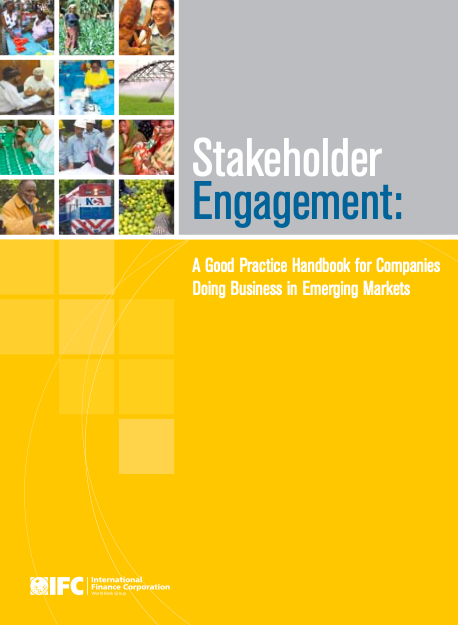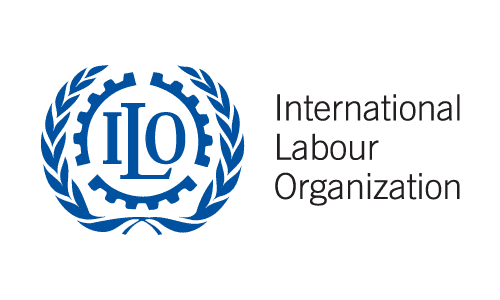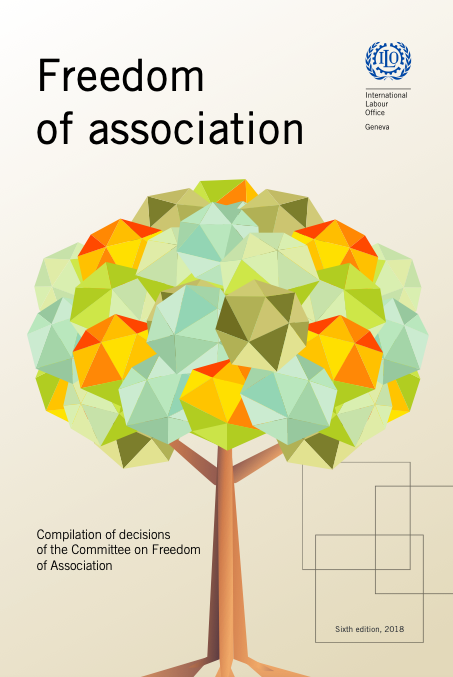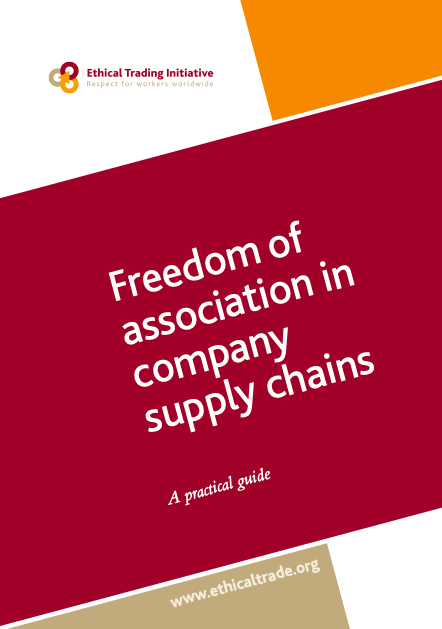Company-Worker Relations
Description
Includes regularly engaging with workers; freedom of association; right to collective bargaining; avoiding protracted negotiations; psychological safety; effective social dialogue; regular, timely, and transparent worker communications; worker surveys and other input and feedback tools; work councils; accessible and transparent worker grievance mechanisms; and whistleblower channels.
Share this Subissue on:LinkedIn
Resources
Getting Started Guide
Company-Worker Relations: A Getting Started Guide
Maintaining good company-worker relations provides clear business benefits. Strong relationships, open communication, effective grievance mechanisms, and workers’ ability to engage in their rights to freedom of association and collective bargaining underpin the realisation of many other fundamental principles and rights at work. Anchored in research, Company-Worker Relations: A Getting Started Guide, will help your company understand how to build strong company-worker relationships and respect workers’ right to organise by explaining key concepts, linking to key actors, and outlining the work ahead.
Worker Grievance Mechanisms
The company has established a legitimate and accessible grievance mechanism to receive complaints, grievances and other forms of feedback from company stakeholders and rights holders (anonymously if desired) with predictable and transparent processes to address such feedback. The company commits to and delivers timely and effective resolution and remediation, as needed. To ensure effectiveness of the approach, the company ensures that company stakeholders know about the mechanism, trust it, and are able to use it.
Migrant Worker Management Toolkit: A Global Framework
This flexible toolkit from BSR can help you better manage migrant worker issues across diverse business contexts. It is based on a three-step framework for developing a comprehensive migrant worker orientation program. This framework includes understanding the key issues and risks affecting employers and workers in your business context; finding a credible, independent external organisations to support the development of the orientation program; and building capacity within operations by educating workers on their rights and available grievance mechanisms. This highly practical toolkit offers relevant standards, examples, checklists, questions, and recommended actions for each step, and will be most useful to supply chain practitioners and facility managers.
Stakeholder Engagement: A Good Practice Handbook for Companies Doing Business in Emerging Markets
This handbook from the International Finance Corporation was created to support company engagement with stakeholder groups "external" to core operations, such as affected communities, local government authorities, and other affected parties. It is divided into two parts: key concepts and principles of stakeholder engagement, and integrating this engagement with the project cycle. In the first part is a useful section on grievance management, which highlights key insights and offers practical advice on managing and resolving dissatisfaction and disputes. This section may be of help to project managers who want to take a proactive approach to preventing grievances from arising and to effectively and equitably resolving them when they emerge.
Grievance Mechanism Toolkit
This toolkit by the Compliance Advisory Ombudsman (CAO) can help you implement operational-level grievance mechanisms in different sectors. It aims to provide practical guidance on how companies with limited time and budgets can enable community members to raise concerns. The toolkit clearly outlines the business case for implementing grievance mechanisms; explains the purpose of grievance mechanisms and how to design and implement them effectively in your local context; and features a repository of best practice tools and techniques. This toolkit will be most useful to compliance, operations, and supply chain management teams.
Community grievance mechanisms in the oil and gas industry
This comprehensive manual was created by Ipieca to provide step-by-step guidance for the design and implementation of operational-level grievance mechanisms, as well as the design and management of corporate-level frameworks for resolving community grievances. The manual draws upon the practical experiences of seven pilot projects created by Ipieca member companies, as well as shared learning from Ipieca members and stakeholders, and will be of particular benefit to operations managers, project managers, policy-makers, and other leaders responsible for managing relations with community partners.
Although this manual was created by and for the oil and gas industry, the manual includes an expansive array of instructions and helpful grievance mechanism tools that can be applied to a broad range of industry and operations contexts.
Grievance Mechanism Toolkit: Practical guidance for companies in supply chains on how to implement effective grievance mechanisms
This toolkit, developed for Reckitt by the Oxfam Business Advisory Service, can help you to design and implement effective site-level grievance mechanisms across your supply chain. The first part explains grievance mechanisms, including best practices, benefits, and limitations, and the second part provides a comprehensive, step-by-step approach that covers the planning, design, and implementation of effective grievance mechanisms. This resource will be especially beneficial to professionals who have a role in managing stakeholder grievances, including site managers, HR managers, safety and security managers, and other professionals with responsibility for labour issues.
Access to Remedy - Principles
These principles from the Ethical Trading Initiative can help you to protect and enshrine the rights and freedoms of vulnerable workers, and especially those of migrant workers. They address foundational principles; the roles and responsibilities of companies; the roles and responsibilities of governments; the rights and responsibilities of workers; and the role and benefits of third parties.
Access to remedy - Practical guidance for companies
This guide from the Ethical Trading Initiative can help you to better understand, prevent, and respond to labour rights abuses. It provides a 4-step approach to ensuring access to remedy in supply chains and features practical advice, tools, and examples to help businesses address labour rights abuses and develop effective remediation strategies in line with the UN Guiding Principles. This includes developing and supporting mechanisms that enable workers to report concerns and rights abuses, known as Operational Grievance Mechanisms (OGM).
ITUC legal guide for setting up an operational-level grievance mechanism for the world of work in the context of business and human rights
This guide from the International Trade Union Confederation provides an overview of the principles and measures to be considered by businesses and workers’ organisations when setting up a non-state-based operational-level grievance mechanism to provide access to justice and remedy for workers, including workers in supply chains. This guide is based on internationally recognised human rights and principles, and it specifically highlights the role of the ILO as the constitutionally mandated international organisation and the competent body to set and deal with international labour standards. The guide highlights the criteria for ensuring an effective non-state-based operational-level grievance mechanism and explains key elements in establishing such mechanisms, including those that specifically address grievances arising from business activities in global supply chains.
Operational Guidelines for Businesses on Remediation of Migrant Worker Grievances: Practical Guidance for Effective Remediation Programmes and Policies
This guidance from the International Organization for Migration (IOM) can help you to develop voluntary programmes to remediate migrant worker grievances, and especially regarding human rights issues faced by migrant workers in international supply chains. Aligned with international human rights and labour law standards and frameworks on international migration, this resource outlines operational and practical steps your company can take in the development of remediation programmes and related policies, including step-by-step guidance; tools and templates for the implementation of the guidance; and key policies for effective remediation programmes.
This resource is part of a two-part resource package. Its companion resource, the Handbook for Businesses on Remediation of Migrant Worker Grievances, outlines the theoretical underpinnings and technical aspects of the remediation guidance.
Handbook for Businesses on Remediation of Migrant Worker Grievances: Conceptualizing Grievance Mechanisms in the Ecosystem of Remedy
This handbook from the International Organization for Migration (IOM) IOM's Remediation Resource Package and provides practical guidance to businesses on the remediation of migrant worker grievances. Aligned with international human rights and labour law standards and frameworks on international migration, it outlines the theoretical underpinnings and technical aspects of the guidance offered by this resource package. This includes providing an overview on what a remediation programme is; the purpose of remediation programmes; key principles of remediation programmes; operational-level grievance mechanisms; and more.
This resource is part of a two-part resource package. Its companion resource, the Operational Guidelines for Businesses on Remediation of Migrant Worker Grievances, outlines the operational and practical steps that companies can take in the development of remediation programmes and related policies.
Worker grievance mechanisms: Guidance document for the oil and gas industry
This guide from Ipieca can help you to develop and implement effective worker grievance mechanisms across workplaces and project sites. It provides useful insights into entry points to worker grievance mechanisms; an overview of grievance mechanism stages and procedures; and ways to manage complaints from workers employed by third parties. It also provides examples of good practices from Ipieca members and other industries that have enabled workers to speak up and have their concerns acknowledged and addressed.
Although created with the energy sector in mind, this guidance is applicable to organisations from across the industry spectrum.
Freedom of Association and the Right to Organise
Freedom of Association and Development
This guide will help you to understand freedom of association and the pivotal role it plays in fostering and maintaining sustainable development. The document outlines how respect for freedom of association can contribute to development outcomes by looking at the benefits it provides in four key areas: inclusive economic growth and poverty reduction; a positive business environment; crisis response; and democracy and governance. It also includes case studies that demonstrate the positive effect that freedom of association can have when governments, trade unions, and employers work together.
Freedom of association - Compilation of decisions of the Committee on Freedom of Association
Informed by decisions from over 3,200 cases related to freedom of association and the protection of trade union rights, this compilation from the Committee on Freedom of Association will help you to understand the rights and civil liberties of employers' organisations and unions; the rights of workers to establish and join organisations, without authorisation and of their own choosing; to draw up their own rules and elect their own representatives; to engage in collective bargaining and strikes; and more.
Freedom of association and the right to collective bargaining: a guide for brands
This guide from the Fair Wear Foundation offers practical guidance that can help you to improve your own practices and policies in support of freedom of association in the workplace and the right to collective bargaining. It explains the fundamentals of freedom of association, the right to collective bargaining, and the threats and barriers they face; highlights key steps that organisations can take to promote freedom of association (including at the system level) and social dialogue; and showcases tools that can support your efforts, such as a questionnaire for suppliers and templates for non-retaliation letters and sample violations. This resource will be particularly beneficial to change agents, human resource professionals, and senior leaders.
Freedom of association in company supply chains
This guide from the Ethical Trading Initiative may help you to identify and understand the impacts of your operations on freedom of association. It features a six-step "quick start" guide to supporting freedom of association: setting the policy; exercising due diligence; establishing the current situation; developing and implementing the action plan; monitoring; and pursuing continuous improvement. It also features a sample policy commitment and a supplier self-assessment for freedom of association to help you get started.
Freedom of Association
This collection of resources from the International Center for Not-for-profit Law (ICNL) shows how protecting civic space supports peoples’ right to freedom of association. It features over 20 reports, articles, and guides that can help you understand the legal, regulatory, and financial supports needed to support freedom of association. It also provides a list of relevant legal instruments from the UN and regional bodies.
Although the ICNL has a civil society focus, the resources provided will also be useful to those addressing human rights issues from within the private sector.
Respecting Trade Union Rights in Global Value Chains: Practical Approaches for Business
This report from the Shift Project and FNV Mondiaal provides practical ideas and tools for improving labour conditions in your value chain. It focuses on credibly addressing the fundamental rights of freedom of association and collective bargaining – jointly referred to as union rights. It includes a tool to identify trade union rights risk and includes recommended avenues to address specific risk factors. It also provides eight real world examples demonstrating how other companies have approached the issue. This guidance will be particularly useful to sustainability, procurement and supply chain management, and legal teams.
FOA & worker representation: company guidance
This resource from the Ethical Trading Initiative can help you to support freedom of association, collective bargaining, and progress worker representation. It introduces a five-step roadmap for supporting independent worker representation and trade union relationships, including reviewing and refining internal policies on workers' rights and protections; identifying risks to workers' rights and protections; developing strategy for supporting and investing in workers' rights; communicating and remediating; and acting to embed, improve, and consolidate. Each step in this resource includes specific guidance with a summary of recommended actions. This resource will be especially beneficial to legal, HR, and communications professionals.
Tools and resources for Business on Freedom of Association
This list of resources from the ILO can help you better understand freedom of association. It lists seven tools covering topics such as collective bargaining, unionisation, and migrant worker rights. It also provides a list of relevant international laws. These resources will be most useful to HR, legal, and supply chain management departments, especially in organisations that operate in areas with weak labour standards.
Social Dialogue Report 2024: Peak-level social dialogue for economic development and social progress
This comprehensive report from the International Labour Organisation can help you to understand the benefit and importance of peak-level social dialogue (PLSD). PLSD involves a set of institutions and processes that bring together representatives from government, industry, and workers’ organisations to facilitate negotiation, consultation, and information exchange on issues relating to labour, economic, and social matters.
The report is divided into five chapters and explains how PLSD is an essential force for sustainable economic development and social progress; decent work; fair income distribution; an effective and inclusive digital and green transition; and social justice. The report draws on case studies, industrial relations data, a global review of PLSD processes and outcomes, and a perceptions survey of employers' and workers' organizations in 38 countries. This resource provides a wealth of information for professionals engaged in company-worker relations.
Understanding and Building Effective Social Dialogue
This e-book from CNV International and their partners can help you understand how to engage employees to develop a common understanding and make decisions together. It explains the internal communication method known as social dialogue that can be used to develop plans for improving employee wellbeing, avoid misunderstandings, prevent internal conflicts, and resolve problems by finding common ground. The book provides practical steps on how to initiate and manage the social dialogue process. For a quick introduction to social dialogue and links to additional resources see here.




















